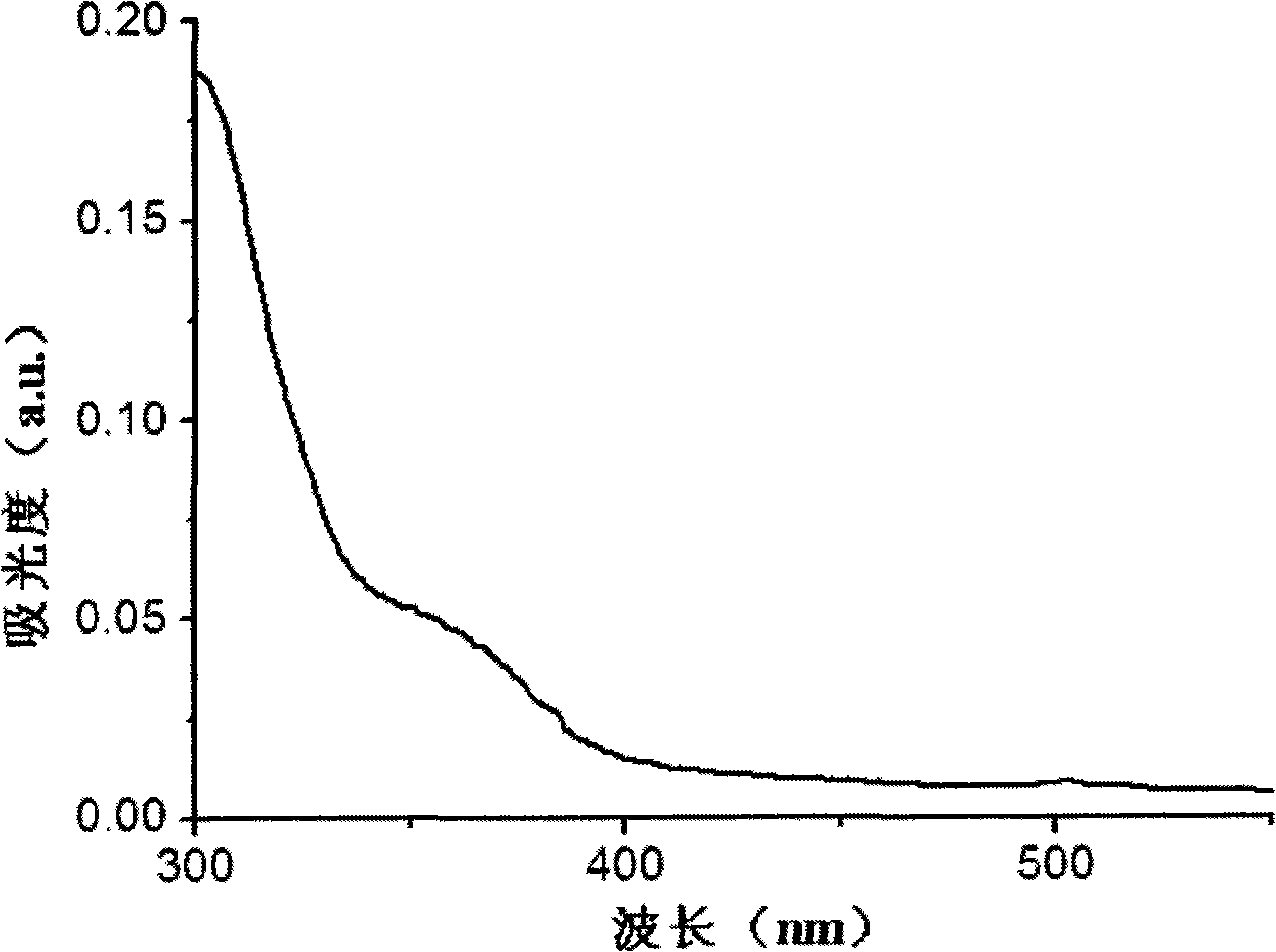Method for preparing quantum point with hyperbranched polymer supermolecule nano-reactor
A technology of hyperbranched polymers and nanoreactors, applied in chemical instruments and methods, luminescent materials, etc.
- Summary
- Abstract
- Description
- Claims
- Application Information
AI Technical Summary
Problems solved by technology
Method used
Image
Examples
Embodiment 1
[0020] Step 1: Add 197 mg of palmitic acid to a 100 ml reaction bottle, add 40 ml of chloroform to dissolve it, then add 117 mg of hyperbranched amidoamine polymer, and stir for 12 hours at room temperature.
[0021] The second step: add 8 mg of Cd(AC) to the chloroform solution obtained above 2 5 ml of aqueous solution, sealed with a glass stopper, and stirred at room temperature for 48 hours.
[0022] Step 3: Store in a separatory funnel, and separate the chloroform solution in the lower layer into a reaction bottle. Nitrogen for 10-15 minutes, then add 2 ml, the concentration is 0.39mg / ml, and the Na after deoxygenation 2 Put the aqueous solution of S into the reaction bottle, continue to pass nitrogen gas for 10 minutes, and continue stirring at normal temperature for about 1 hour. Static separation can give clear light yellow CdS chloroform solution.
[0023] Such as figure 1 As shown, the ultraviolet-visible spectrum of the CdS quantum dots prepared in this example s...
Embodiment 2
[0025] Step 1: Add 235 mg of palmitic acid to a 100 ml reaction bottle, then add 40 ml of chloroform to dissolve it, then add 120 mg of hyperbranched polyethyleneimine, and stir for 12 hours at room temperature.
[0026] The second step: add 8 mg of Cd(ClO) to the chloroform solution obtained above 4 ) 2 5 ml of aqueous solution, sealed with a glass stopper, and stirred at room temperature for 48 hours.
[0027] Step 3: Store in a separatory funnel, and separate the chloroform solution in the lower layer into a reaction bottle. Nitrogen gas for 10-15 minutes, then add 2 ml, the concentration is 0.98 mg / ml, and the Na after deoxygenation 2 Put the aqueous solution of S into the reaction bottle, continue to pass nitrogen gas for 10 minutes, and continue stirring at normal temperature for about 1 hour. Static separation can give clear light yellow CdS chloroform solution.
[0028] The transmission electron microscope image of the prepared CdS quantum dots is as follows figu...
Embodiment 3
[0030] Step 1: Add 142 mg of palmitic acid to a 100 ml reaction bottle, then add 40 ml of chloroform to dissolve it, then add 124 mg of hyperbranched sulfone-amine polymer, and stir at room temperature for 12 hours.
[0031] The second step: add 8 mg of Cd(NO) to the chloroform solution obtained above 3 ) 2 5 ml of aqueous solution, sealed with a glass stopper, and stirred at room temperature for 48 hours.
[0032] Step 3: Store in a separatory funnel, and separate the chloroform solution in the lower layer into a reaction bottle. Nitrogen for 10-15 minutes, then add 2 ml, the concentration is 1.17 mg / ml, and the Na after deoxygenation 2 Put the aqueous solution of S into the reaction bottle, continue to pass nitrogen gas for 10 minutes, and continue stirring at normal temperature for about 1 hour. The light yellow chloroform solution of CdS quantum dots can be obtained by static separation.
[0033] The properties of the product obtained in this example were tested by ult...
PUM
| Property | Measurement | Unit |
|---|---|---|
| size | aaaaa | aaaaa |
Abstract
Description
Claims
Application Information
 Login to View More
Login to View More - R&D
- Intellectual Property
- Life Sciences
- Materials
- Tech Scout
- Unparalleled Data Quality
- Higher Quality Content
- 60% Fewer Hallucinations
Browse by: Latest US Patents, China's latest patents, Technical Efficacy Thesaurus, Application Domain, Technology Topic, Popular Technical Reports.
© 2025 PatSnap. All rights reserved.Legal|Privacy policy|Modern Slavery Act Transparency Statement|Sitemap|About US| Contact US: help@patsnap.com


